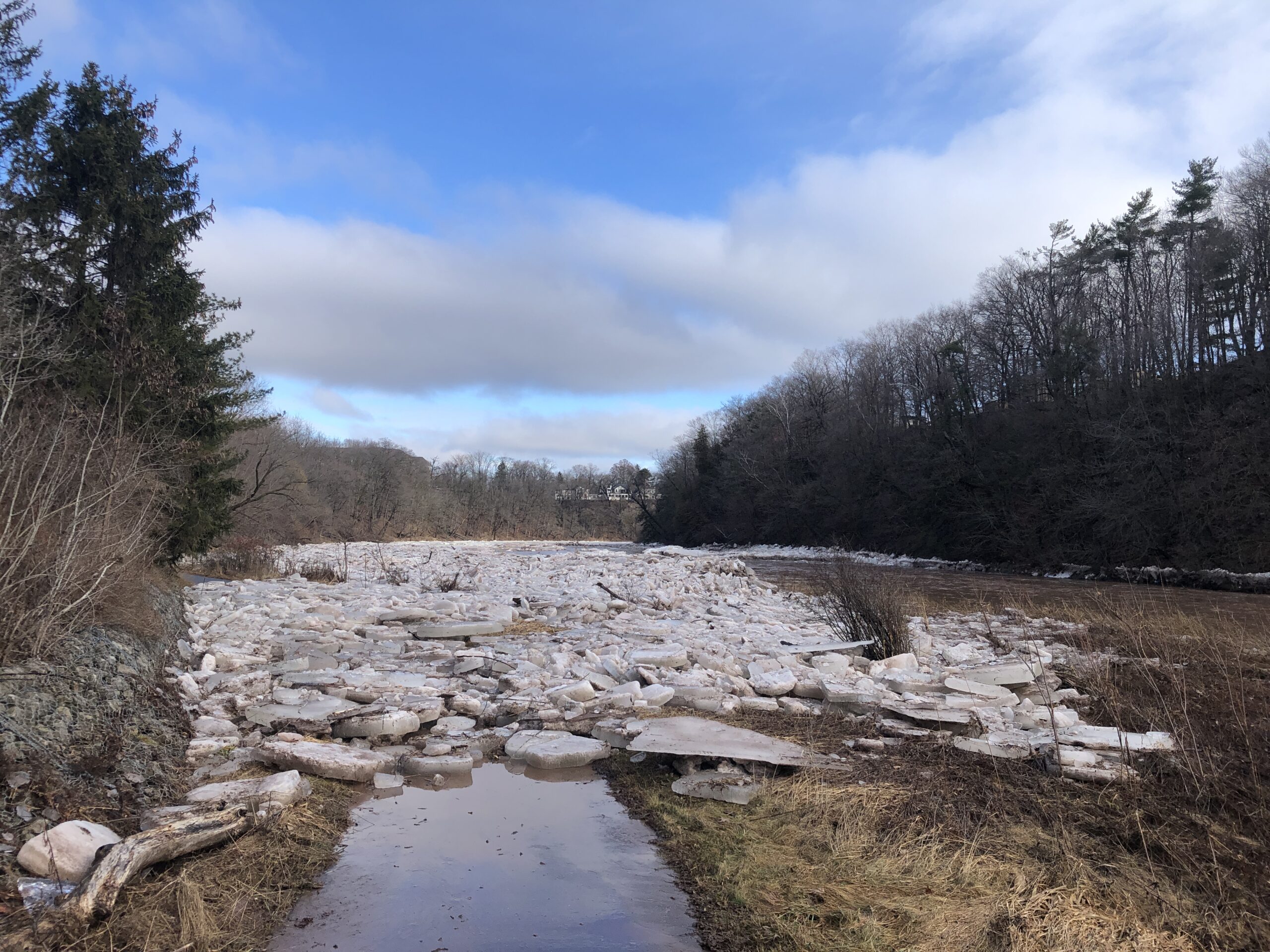March 1, 2024 — Conservation Halton
Conservation Halton reminds residents of dangers that can exist near streams, rivers, ponds, and lakes. As spring approaches with warmer temperatures, rain, melting snow, and shifting ice can contribute to higher, faster-flowing water in local watercourses.
Conservation Halton’s watershed received a lower-than-normal snowfall this winter. In addition, periods of warm temperatures in January and February resulted in an early snowmelt. The ground within our watershed remains saturated in many places. During periods of intense rain, there could be higher amounts of runoff in short intervals. Slippery, unstable streambanks and extremely cold water temperatures can lead to hazardous conditions close to water bodies.
Spring safety tips for residents:
- Keep people and pets away from the edges of all bodies of water.
- Avoid all recreational activities in or around water, especially waterbodies with ice cover.
- Do not attempt to walk on ice-covered waterbodies.
- Do not attempt to drive through flooded roads or fast-moving water.
- If you live close to water, move objects such as chairs or benches away from the edge to avoid losing them during potential high waters.
- Avoid walking close to or across riverbanks and ice-covered water to prevent falling through. Riverbanks can become unstable due to snowmelt and erosion.
- Rescuing anyone from icy water is dangerous. If you see a person or pet that has fallen through the ice, call 911 immediately.
For more information, contact your local Conservation Authority.
- Lake Simcoe Region Conservation Authority (905) 895-1281
- Toronto & Region Conservation Authority (416) 661-6514
- Conservation Halton (905) 336-1158
- Credit Valley Conservation (905) 670-1615
- Central Lake Ontario Conservation Authority (905) 579-0411
- Ganaraska Region Conservation Authority (905) 885-8173
- Nottawasaga Valley Conservation Authority (705) 424-1479
- Kawartha Conservation (705) 328-2271
About Conservation Halton’s Flood Forecasting and Operations Program
Conservation Halton provides a flood forecasting and operations program to reduce the risk of property damage and loss of life due to flooding.
When flooding is possible or about to occur, Conservation Halton issues flood messages to municipal emergency management officials, school boards, police, EMS, and the media. Municipal officials take action to warn local residents. Residents are also encouraged to subscribe to Conservation Halton’s Flood Messages via email.
Conservation Halton is responsible for the maintenance and operation of four major flood control dams (Kelso, Hilton Falls, Scotch Block, and Mountsberg) and over 12 kilometers of flood conveyance channels (Sixteen Mile Creek through Milton, Morrison-Wedgewood diversion in Oakville and the Rambo-Hager diversion in Burlington).




